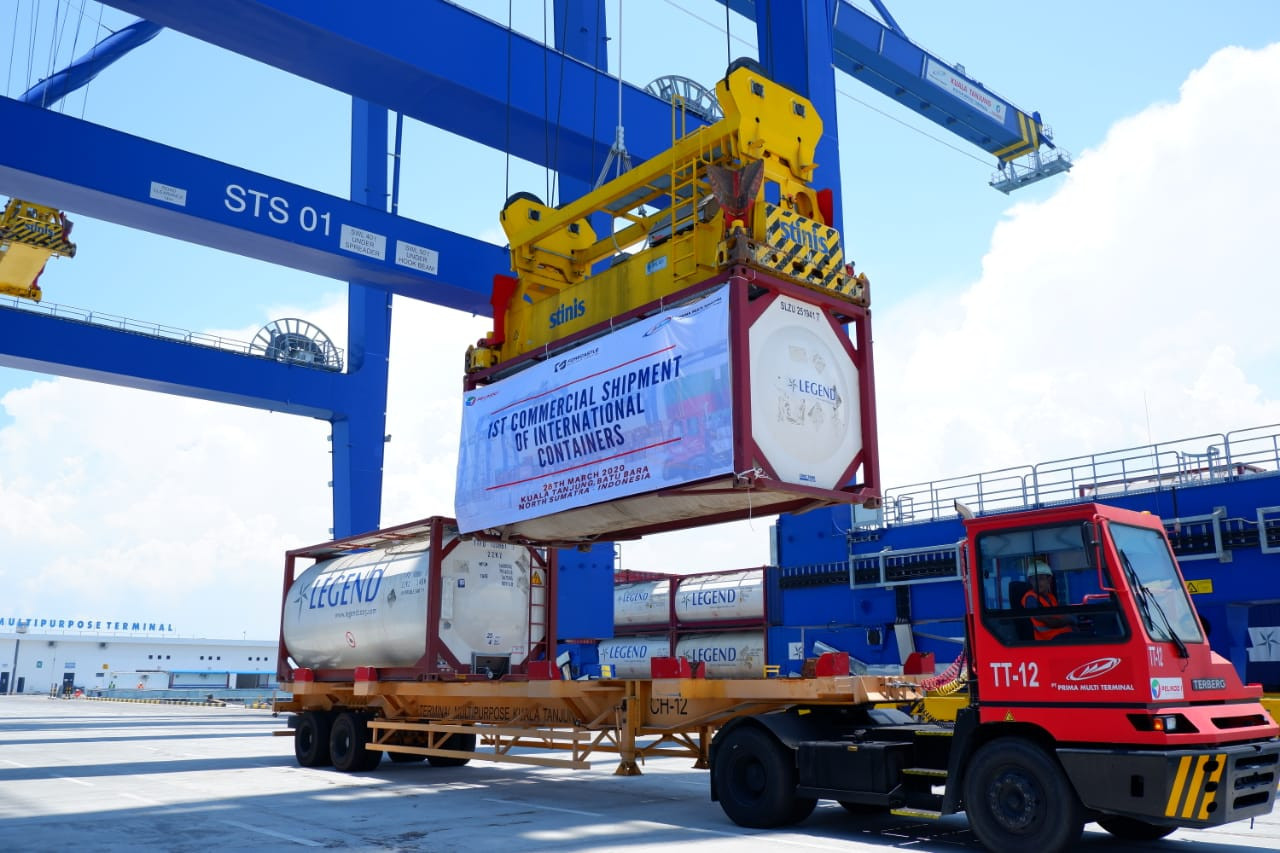Popular Reads
Top Results
Can't find what you're looking for?
View all search resultsPopular Reads
Top Results
Can't find what you're looking for?
View all search resultsIndonesia’s exports hit decade high in March as demand, prices pick up
The country's export value rose 30.47 percent yoy to US$18.35 billion in March, the highest since it reached $18.64 billion in August 2011.
Change text size
Gift Premium Articles
to Anyone
I
ndonesia’s export value in March hit its highest level since August 2011 as global economic activity rebounds, sustaining progress in the country’s trade recovery.
Statistics Indonesia (BPS) reported Thursday the export value rose 30.47 percent year-on-year (yoy) to US$18.35 billion in March, the highest level since the $18.64 billion booked in August 2011. On a monthly basis, the export value was up 20.31 percent.
“The rise in demand from various countries along with [price] increases in Indonesia’s main commodities had a large impact on the country’s export performance in March,” BPS head Suhariyanto said in a virtual briefing.
He gave the example of coal, kernel oil, palm oil, copper, aluminum and lead as major export commodities that saw strong price increases on a monthly basis.
The rise in exports followed the recovery trend that started in November last year as Indonesia’s main trading partners, such as China, re-emerged from the pandemic.
Two months into the pandemic, Indonesia’s exports and imports declined by 29.15 percent yoy and 42.23 percent yoy in May last year, respectively, the steepest declines in at least a decade, as the government imposed large-scale social restrictions (PSBB).
Read also: Indonesia’s exports, imports nosedive in May as COVID-19 restrictions hit trade
Aside from oil and gas exports, manufacturing exports led the rebound last month with an annual increase of 33.45 percent to $14.84 billion, followed by agriculture, mining and other exports.
But BPS also reported a decline in some export commodities, such as in vehicles and auto parts, which fell 2.06 percent month-to-month (mtm) to $796.8 million in March.
Imports also showed a sustained recovery trend as their value rose 25.73 percent yoy to $16.79 billion in March, led by growth in capital goods imports. In February, the value of imports rose for the first time in 20 months.
Read also: Indonesia sees first annual import growth in 20 months as manufacturing picks up
With Muslims observing Ramadan between April and May, the value of Indonesia’s imported dates has been steadily rising since January, according to Suhariyanto. In March, the country imported a total of $17.1 million worth of dates.
Aside from dates, vaccines, raw sugar and Mandarin oranges also drove the 13.4 percent annual growth in Indonesia’s consumables imports to $1.41 billion. The overall vaccine imports, including those for COVID-19, rose more than tenfold to $443.4 million in the January–March period.
Although the export performance was partly a result of the low base effect, it was also driven by the sustained expansion in the manufacturing activity and a rebound in the global economy, especially in the east, propelled by China’s rapid recovery, said Fithra Faisal, an economist at the University of Indonesia (UI).
Financial analytics and data company IHS Markit reported the country’s manufacturing Purchasing Managers’ Index (PMI) rose to a decade-high at 53.2 in March, which continued the expansionary trend since November last year. The index is a gauge of the sector based on a monthly survey of roughly 400 manufacturers.
Read also: RI manufacturing PMI hits 10-year high
“In that context, it is quite solid, indicating our exports will grow quite consistently this year,” Fithra told The Jakarta Post in a phone interview on Thursday. “The [monthly] growth has been quite consistent and it positively correlates with the PMI figures.”
Both the rises in exports and imports were well above the forecasts of 17.87 percent and 11.40 percent made by state-owned Bank Mandiri, according to an economist with the lender, Faisal Rachman. He noted a narrowing trend in the country’s trade surplus, but it signaled a recovery in the economy.
The trade surplus stood at $1.57 billion in March, marking a 118.05 percent yoy increase. However, the figure was below the bank’s forecast of $1.71 billion.
“Going forward to the second half of 2021, assuming that restrictions on community activities could be relaxed due to declining daily COVID-19 new cases and an increasing number of people receiving the COVID-19 vaccines, import activity is projected to catch up as the domestic economic growth accelerates, driven by strengthening domestic consumption and investment,” Faisal said in a note released on Thursday.
Bank Mandiri has forecast the current account balance to reach between minus 0.5 and 0.5 percent of the country’s gross domestic product (GDP) in the first quarter of the year. In the fourth quarter of 2020, the surplus in the current account reached 0.29 percent of GDP.
Meanwhile, Moody’s Analytics associate economist Sonia Zhu said the trade surplus would help stabilize the rupiah, which has been under pressure in recent weeks as global investors flocked to the US dollar.
“We expect Indonesia to continue to post a trade surplus in the coming months, as exports will likely increase as global trade improves, which will partially offset depreciation pressure in the near term,” she wrote in an analysis on Thursday.










